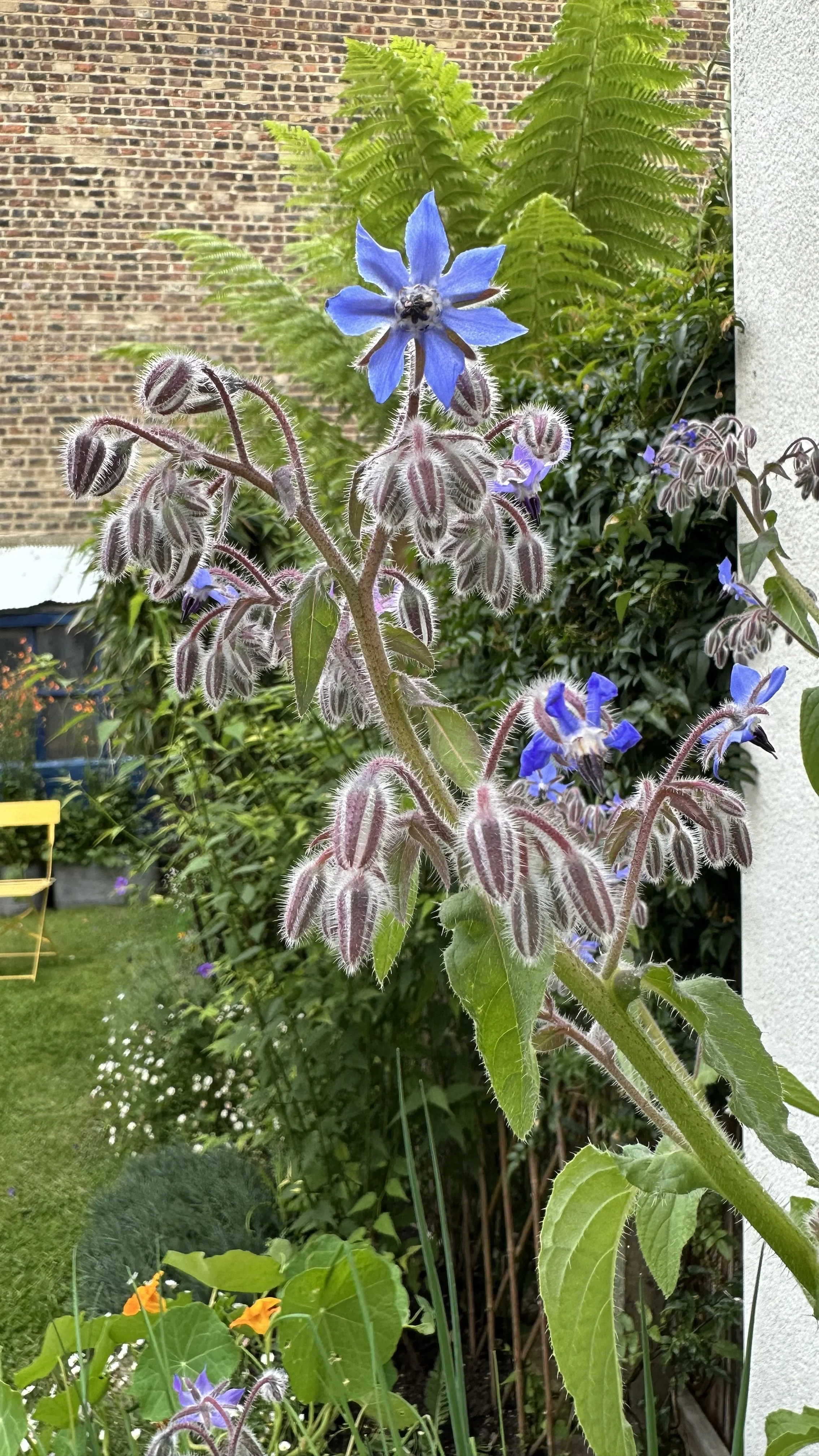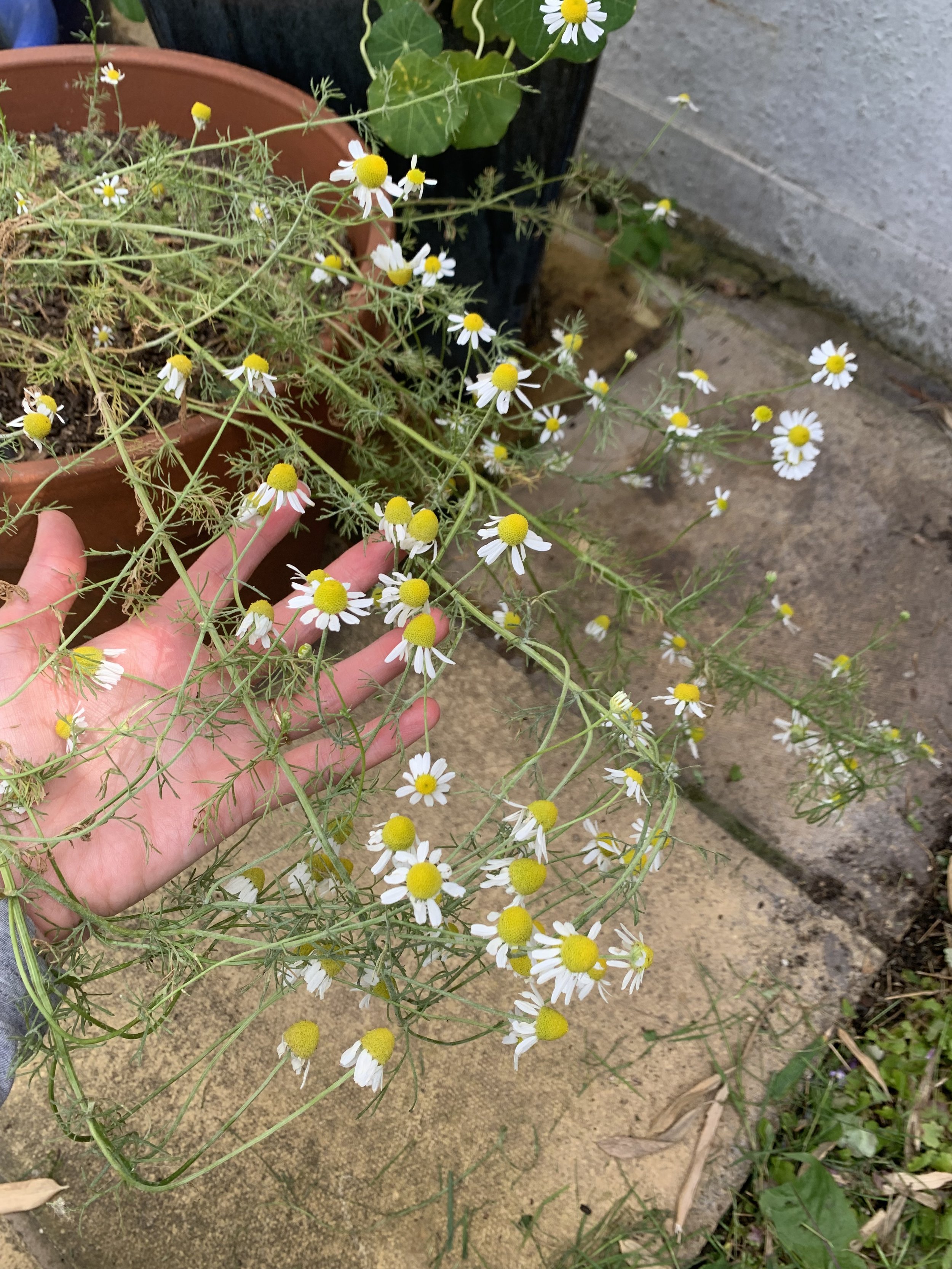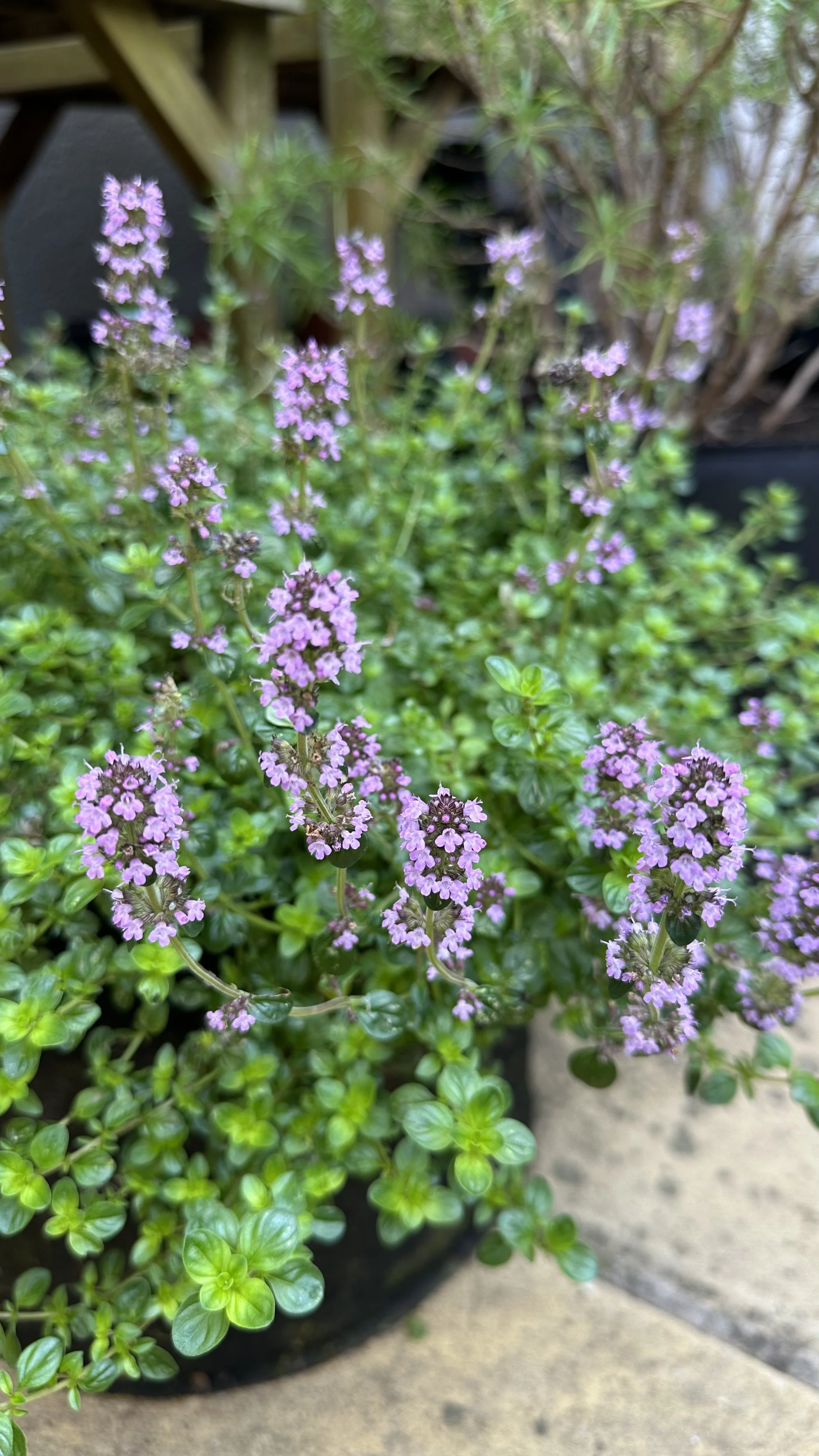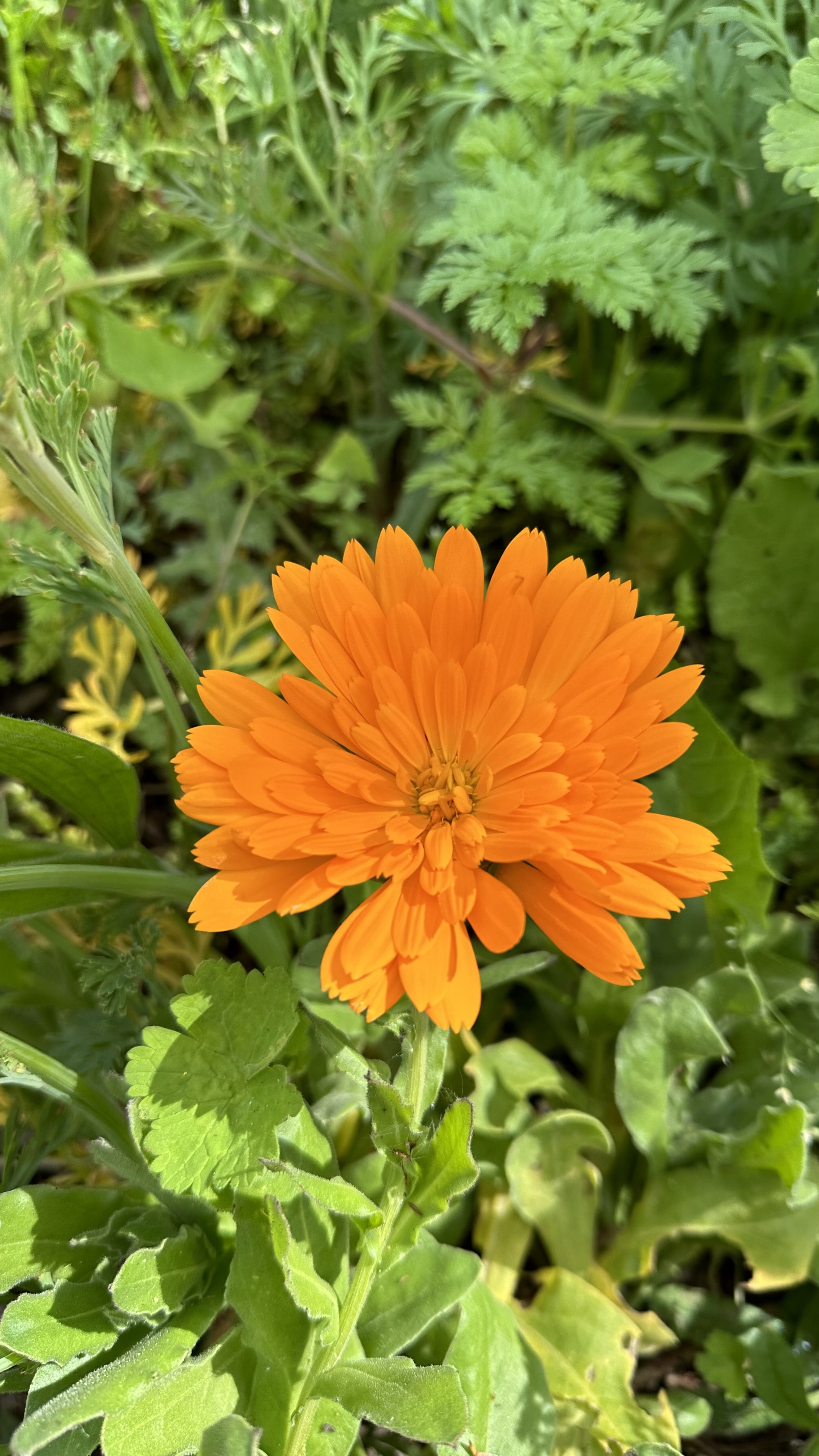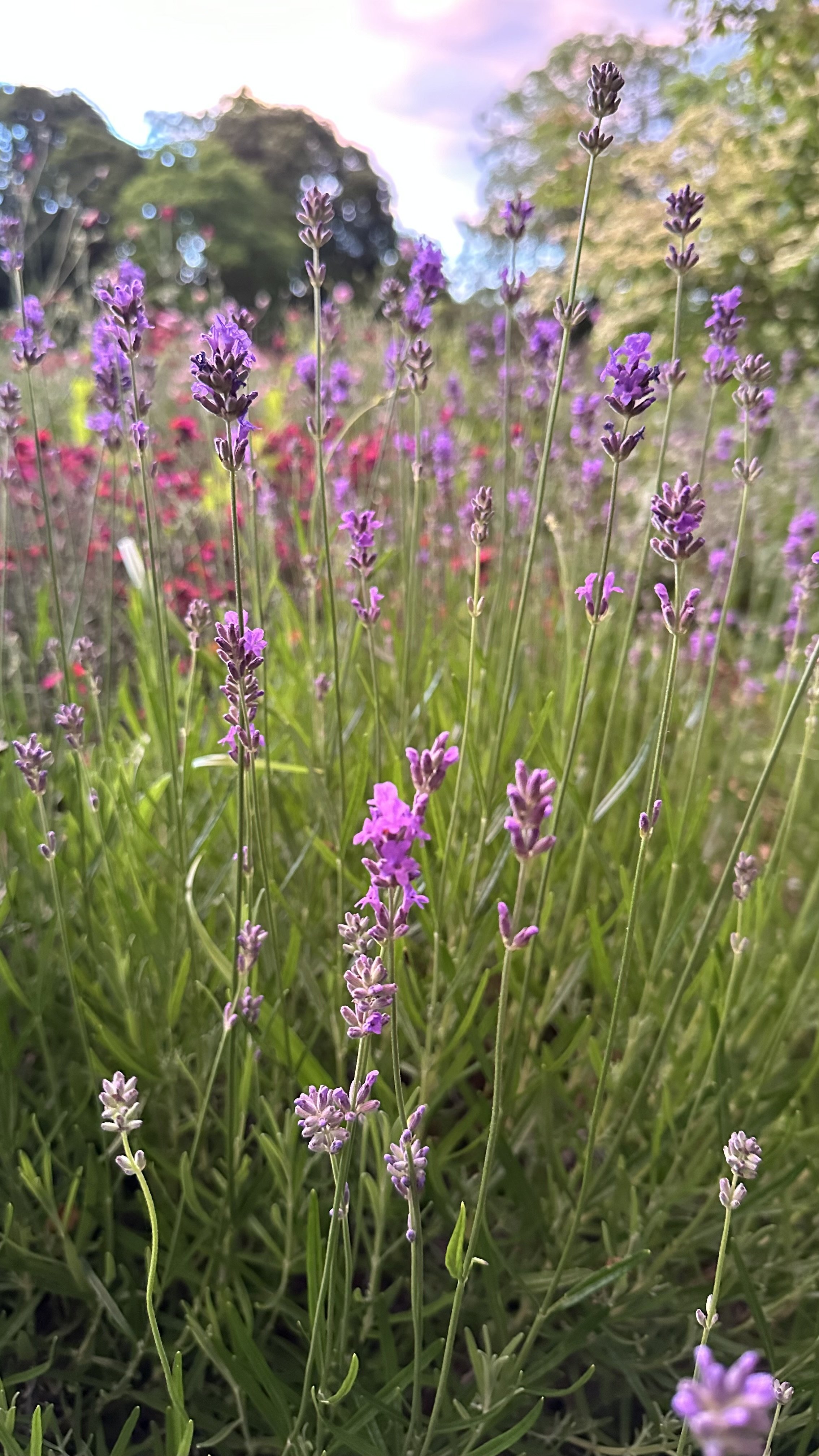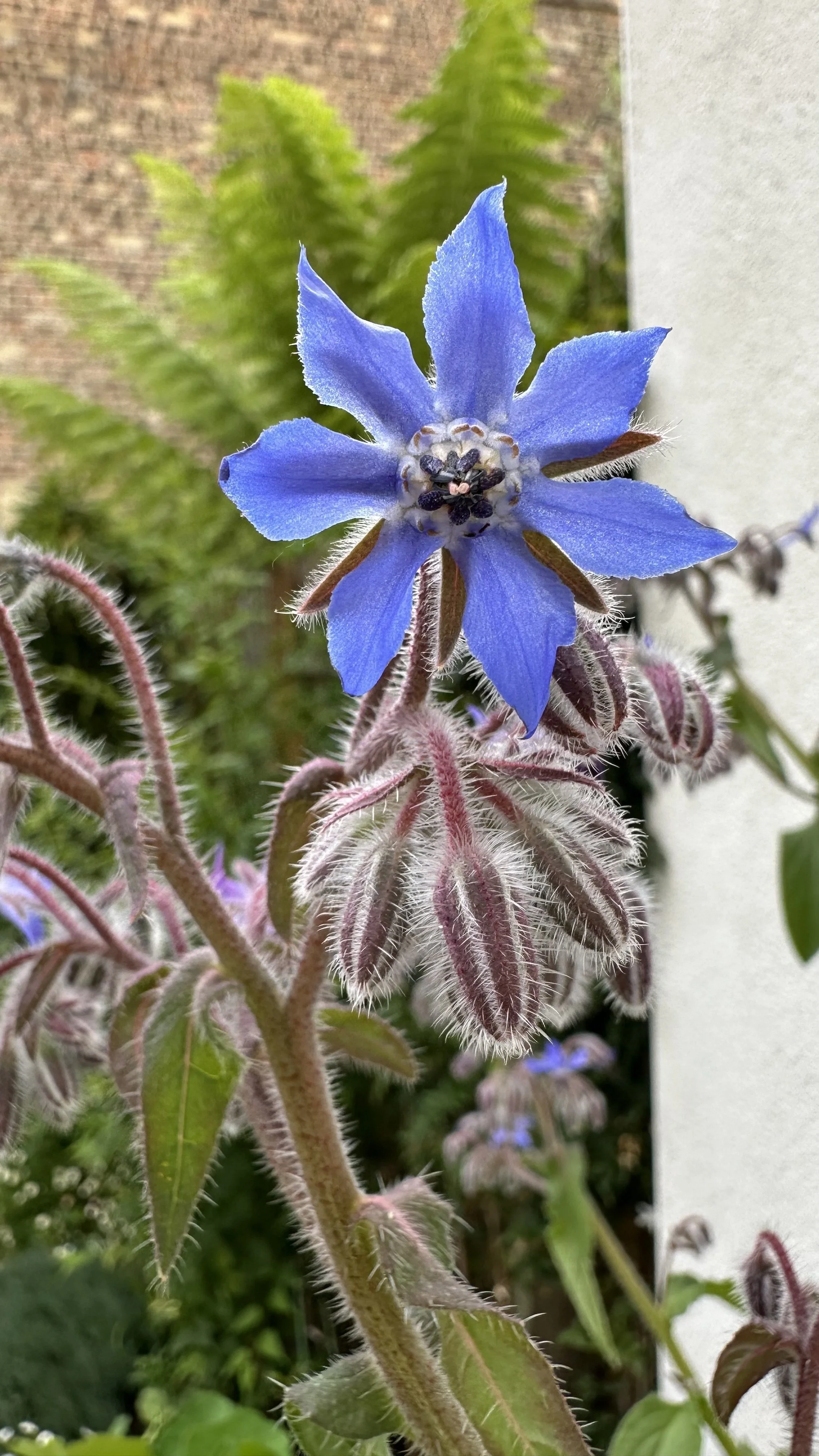The 10 Best Flowering Herbs
This website is reader-supported - thank you! This post may contain affiliate links. As an Amazon Associate, I earn from qualifying purchases at no extra cost to you.
When it comes to combining beauty and practicality in the garden, flowering herbs are an easy win.
These plants aren’t just pretty faces—they’re multitaskers that bring so much value to your garden.
I love growing flowering herbs because they do double (or even triple) duty: they brighten up the garden, attract pollinators like bees and butterflies, and are often great to use in the kitchen.
Plus, there’s something so satisfying about snipping a sprig of fresh lavender or chamomile right from your own garden.
Let me share some of my top picks for flowering herbs that are as functional as they are beautiful.
To learn more about herb gardening, check out my guides:
1. Anise Hyssop
Anise hyssop is one of those plants that feels like a secret weapon in the garden.
With its tall spikes of purple flowers, it’s not just stunning but incredibly practical too.
Bees and butterflies flock to it, which means you’re not just planting something beautiful—you’re also supporting your local pollinators.
And let’s not forget the flavor!
The leaves and flowers have this gentle licorice taste that’s perfect for steeping into teas or adding a unique twist to desserts.
The petals are lovely sprinkled on summer fruit salads or dried for winter teas.
It’s an easy plant to grow, even for beginners, and thrives in well-draining soil with plenty of sunlight.
Honestly, it’s hard not to love an herb that’s as versatile as this one.
Here are the seeds I recommend:
To learn more about starting an herb garden, check out my guides:
2. Bee Balm
Also known as Monarda, bee balm is like a fireworks show for your garden, with vibrant blooms of pink, red, or purple.
Hummingbirds absolutely love it.
Beyond its beauty, bee balm has a subtle citrusy flavor that adds a little zing to salads or a splash of color as a garnish.
You can even use it to make a simple herbal syrup for summer drinks.
If you want a plant that’s equal parts eye-catching and useful, bee balm is a must-have.
Here are the seeds I recommend:
3. Lemon Balm
Lemon balm might not be the flashiest plant in the garden, but it’s one of those herbs you quickly fall in love with.
Its delicate white flowers may be understated, but its fresh citrus scent is pure magic.
Whenever you brush past it, it is worth taking a moment to enjoy its fragrance.
It’s a go-to for soothing teas and homemade balms—you even chop a few leaves into salads for a zesty twist.
Best of all, it’s incredibly easy to grow.
Whether you’re tucking it into a container or letting it sprawl in the garden, lemon balm will thrive with minimal effort, making it perfect for anyone who loves a low-maintenance plant.
Learn more with my guide: Companion Planting Lemon Balm.
Here are the seeds I recommend:
For more tips, check out my guides:
No Dig Gardening Method: Grow More with Less Effort
4. Borago officinalis (Borage)
Borage is one of those herbs that feels like a little garden secret waiting to be discovered.
Its stunning star-shaped blue flowers catch your eye immediately, and they’re not just for show—both the flowers and leaves are edible!
They have a mild cucumber taste that’s so refreshing.
I love adding a few blossoms to summer drinks for an extra special touch or tossing them into salads to brighten up the plate.
It’s also a fantastic companion plant, known for attracting pollinators and deterring pests.
Whether you’re growing it for its beauty, its culinary uses, or its garden benefits, borage earns its spot in any herb garden.
Learn more with my guide: Borage Companion Planting: The Best Pairings.
Here are the seeds I recommend:
5. Chamomile
Chamomile is like a little bundle of joy for any garden.
Its tiny daisy-like flowers have such a sweet, nostalgic charm that always makes me smile.
Beyond its beauty, it’s famous for calming teas that help you unwind after a busy day.
I love harvesting the flowers and drying them to keep a stash of homemade chamomile tea on hand.
It’s also surprisingly easy to grow—just give it some well-drained soil, and it’ll reward you with that soft, sort of whimsical touch that makes any herb garden feel magical.
Learn more with my guide: Harvesting Chamomile: From Garden to Teacup.
Here are the seeds I recommend:
6. Lavender
Lavender is one of those plants that feels like pure serenity.
Its fragrant purple flowers instantly bring a sense of calm, whether you’re catching their scent in the garden or drying them for sachets and teas.
I love snipping a few stems for bouquets to keep around the house; it makes everything feel a bit cozier.
Lavender also has a way of elevating simple recipes—a pinch of dried lavender in shortbread cookies or lemonade can be a really nice subtle twist.
It’s surprisingly easy to care for, too.
Just give it a sunny spot with well-drained soil, and it will reward you with beauty and utility year after year.
Learn more with my guide: Lavender Companion Plants: Enhancing Your Herb Garden.
Here are the seeds I recommend:
For more lavender growing tips, check out my guides:
How to Create a Lavender Hedge
7. Thyme
Thyme might be small, but it packs a punch in both flavor and charm.
Its tiny flowers, which come in shades of pink, white, or purple, feel like little jewels scattered across the garden.
I love how it thrives as a low-growing ground cover, filling in spaces with its soft, fragrant greenery.
In the kitchen, thyme is an absolute essential.
Whether I’m adding it to roasted vegetables, soups, or marinades, it always elevates the dish.
Plus, it’s incredibly easy to grow and doesn’t mind a bit of neglect, making it perfect for busy gardeners.
It’s one of those herbs that quietly earns its place in both your garden and your recipes.
Learn more with my guide: Growing Thyme from Seed.
Here are the seeds I recommend:
8. Calendula
Calendula’s cheerful yellow and orange flowers feel like sunshine in plant form.
They’re not only beautiful but incredibly useful too.
You can use calendula flowers to make soothing teas and DIY skin-care products—their anti-inflammatory properties are amazing for calming irritated skin.
In the garden, they’re team players, acting as excellent companion plants for vegetables like lettuce and zucchini.
The bright blooms also attract pollinators, which means healthier plants all around.
Whether you’re growing them for their looks, their healing properties, or their ability to boost your veggie garden, calendula is a true multitasker that deserves a spot in your garden.
Learn more with my guide: The Easiest Way to Grow Calendula from Seed.
Here are the seeds I recommend:
9. Fennel
Fennel brings a touch of elegance to the garden with its feathery, almost cloud-like foliage and cheerful yellow flower clusters.
It’s a plant that not only looks stunning but works hard too.
The seeds and flowers are culinary gems—I love roasting fennel seeds to sprinkle over dishes for a subtle anise flavor or using the flowers as a delicate garnish.
But fennel isn’t just for us humans; it’s a favorite of beneficial insects like ladybugs, which help keep pests in check.
Whether you grow it for its striking appearance, its kitchen uses, or its knack for supporting a healthy garden ecosystem, fennel is a true all-rounder.
Learn more with my guide: A Guide to Companion Planting with Fennel.
Here are the seeds I recommend:
10. Echinacea (Coneflower)
Echinacea is one of those plants that brings both beauty and purpose to the garden.
Its daisy-like flowers, in shades ranging from soft pink to bold orange, are not only stunning but also incredibly functional.
It’s also a haven for pollinators—watching butterflies and bees flock to its blooms is so rewarding.
Plus, it’s a hardy perennial, so once it’s planted, you can enjoy its cheerful flowers year after year with minimal effort.
Learn more with my guide: Growing Echinacea from Seed.
Here are the seeds I recommend:
Tips for Growing Flowering Herbs
Growing flowering herbs is easier than you might think, and a little extra care goes a long way.
Here are a few tips I’ve learned along the way:
Sunlight:
Most flowering herbs are sun lovers, needing at least six hours of sunlight each day.
Find a sunny spot in your garden or on your patio if you’re growing in containers.
Soil:
These herbs thrive in well-draining soil.
If your garden soil tends to hold water, mix in some sand or organic potting mix to improve drainage.
Here is the potting mix I recommend:
Watering:
While herbs like lavender and thyme are happiest in drier conditions, others like lemon balm prefer consistent moisture.
Get to know the specific needs of each plant and adjust accordingly.
Companions:
Pairing flowering herbs with vegetables like lettuce or Brussels sprouts can be a game-changer.
Not only do they help with natural pest control, but they also improve growth and attract pollinators to your veggie garden.
For more companion planting ideas, check out my guides:
The Best Basil Companion Plants
FAQs
Can flowering herbs grow in containers?
Yes, most flowering herbs thrive in containers.
Just make sure the pots have good drainage and the plants get adequate sunlight.
Are there any perennial flowering herbs?
Absolutely.
Lavender, thyme, and fennel are just a few examples of perennial flowering herbs that come back year after year.
Can flowering herbs be used as cut flowers?
Yes, herbs like lavender, chamomile, and echinacea make wonderful additions to bouquets.
Learn more with my guide: Cut Flower Garden: How to Get Started.
How do I attract more pollinators with flowering herbs?
Choose herbs with brightly colored flowers, like bee balm and borage, and plant them in clusters to make them more noticeable to bees and butterflies.
Wrap-Up
Flowering herbs are truly some of the most versatile plants you can grow.
Whether you’re planting herb plants for their beauty, experimenting with culinary herbs in your kitchen, or looking for organic ways to support pollinators and companion plant your vegetables, these multitasking wonders have you covered.
They bring together the best of both worlds—practicality and charm—making them a must-have addition to any garden.
So, why not grab a few seeds or plants and start exploring the endless possibilities flowering herbs have to offer?
Pin this post to save it for later!




